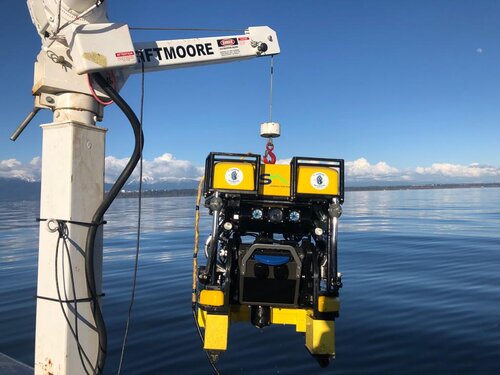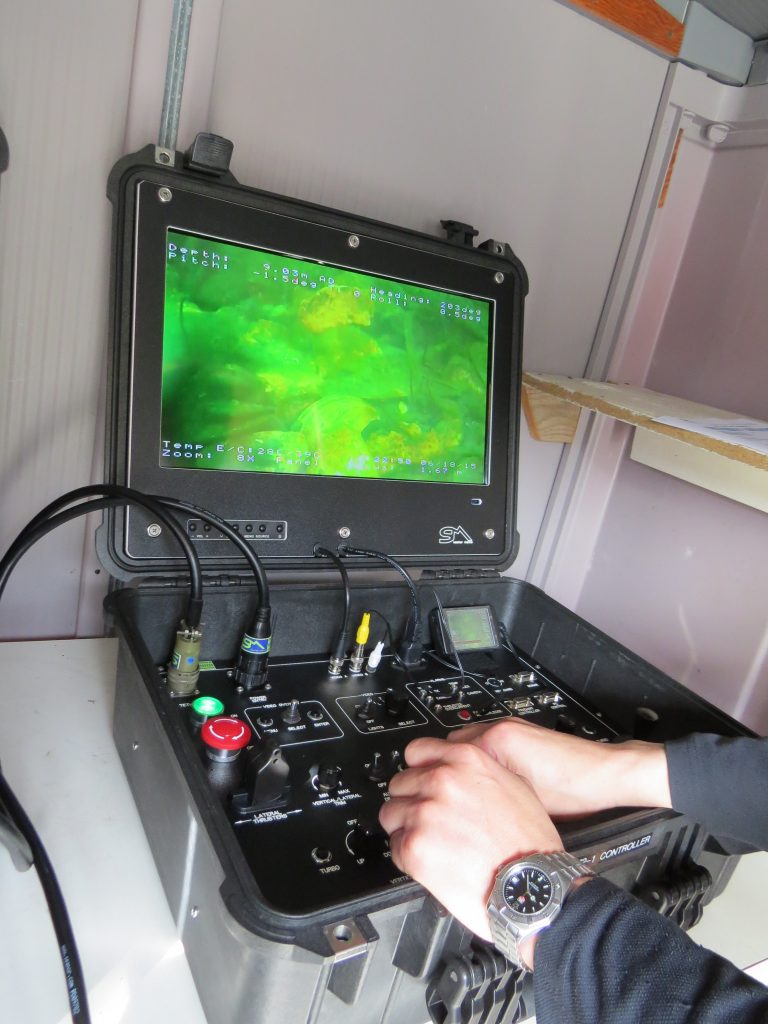The question of how ROV sensors are affected by depth is not one that has a simple answer. As with everything, it depends on the depth, the sensor and the overall quality of your ROV. At 600 meters underwater, the pressure is much higher compared to the surface. The pressure increases by about 1 atmosphere for every 10 meters of depth. Therefore, at 600 meters, the pressure is approximately 60 times atmospheric pressure. SEAMOR ROVs are rated for either 300m or 600m maximum depth.
Our engineers must carefully consider the materials, construction, sealing mechanisms, and electronic components. They have to ensure the reliable performance of sensors and data transmission systems in these extreme conditions.
What do we do to protect ROV sensors?
The materials used in the construction of the ROV and its sensors must be able to withstand the high pressure at depth. This is particularly important for the hull, cables, and any sensors exposed to the surrounding water. Specialized materials, such as anodized aluminum and stainless steel, are often used to ensure strength and corrosion resistance.
Additionally, many sensors are housed in pressure-resistant containers to protect them from the external pressure. These pressure housings maintain a consistent internal pressure, shielding the sensitive electronics inside. The design and construction of these housings are critical to the overall performance of the ROV.
Obviously, sensors and electronic components are susceptible to water damage. At high pressures, water can infiltrate even the smallest openings. Sealing mechanisms must withstand the pressure and prevent water ingress. O-rings, seals, and other watertight enclosures are common features in deep-sea technology and machinery.

How are ROV sensors affected by depth?
Acoustic Considerations
Acoustic signals travel differently under high-pressure conditions. Signal propagation, beamforming, and other acoustic characteristics may need to be adjusted for accurate data transmission. Be sure to discuss this topic with the manufacturer or seller of your acoustic devices. Not all ROVs have acoustic components as part of their standard repertoire. These devices can be expensive and are usually only included when needed to complete specific tasks. If you will be working in tricky environments with your ROV, we do recommend considering a sonar. Especially if you plan on navigating murky waters and tight spaces.
Data Transmission
Cables used for data transmission can be affected by the increased pressure. Specialized cables with pressure-resistant designs are necessary to ensure reliable data transfer between the ROV and the surface vessel. Fiber optics are often used because they are not susceptible to electrical interference and can transmit data over longer distances. The wear and tear of these cables when not properly cared for can also impact transmission speed and quality. Although tethers can easily be replaced, taking care of your ROV is something you can do to keep them functioning as intended.
Temperature Considerations
Deep-sea environments often come with lower temperatures. Both the pressure and temperature can influence the behavior of materials and electronic components. Sensors and systems must be designed to operate reliably in these conditions. Our SEAMOR Chinook knows this all too well. Check out its arctic search and rescue operation. This link will lead you to the Chinook doing some cool environmental research.
Battery Performance
Pressure can affect the performance of batteries. Battery housings must be designed to withstand the pressure, and the batteries themselves may exhibit different characteristics at depth. SEAMOR ROVs use tethered power sources, so this is not something we often consider. That being said, we do believe batteries have their place in the ROV market. Your ROV must suit your needs and tethered power is not always an option.
Have questions? Want a demo? Get in touch!

